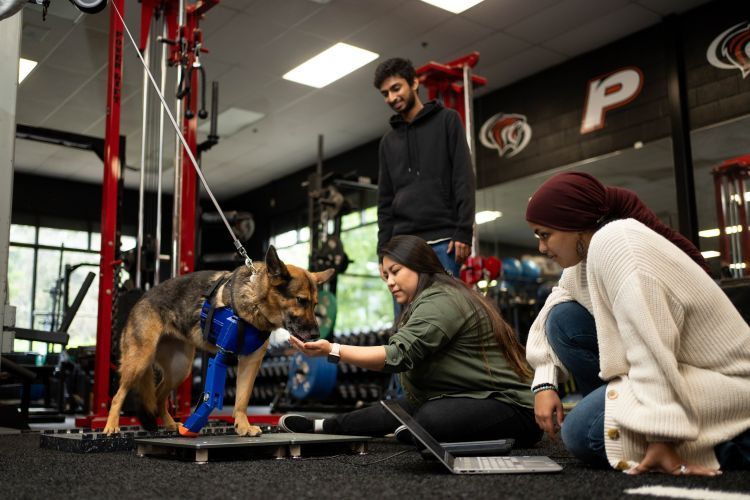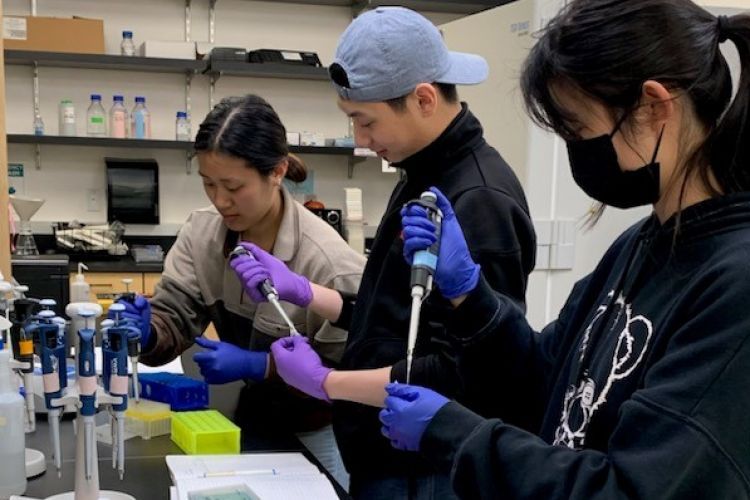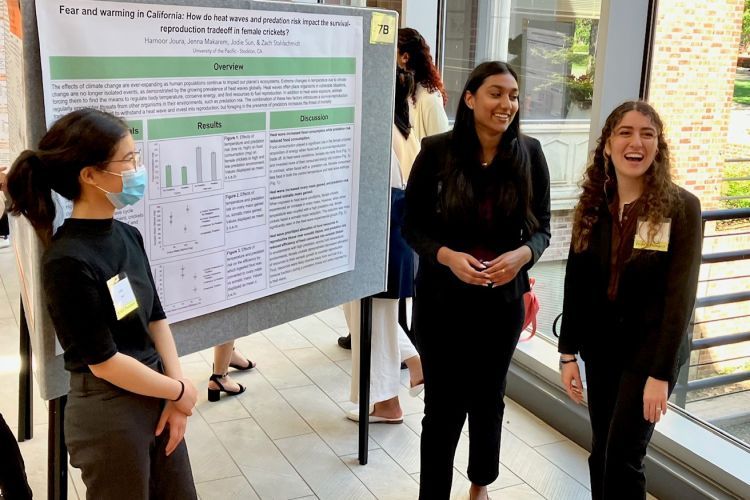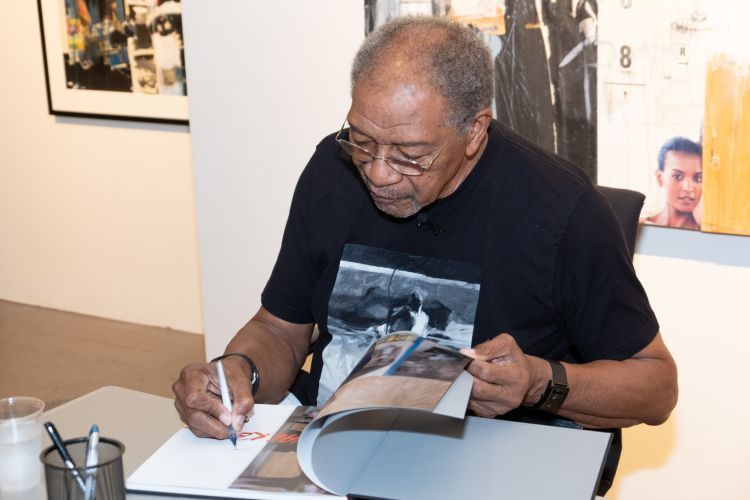Breadcrumb
Students take learning to new heights with innovative research projects
From designing a prosthetic limb for a dog to exploring climate change and insecticide resistance, University of the Pacific students have embarked on innovative research and engineering projects over the past year.
More than 80 student projects were showcased during the annual Pacific Undergraduate Research and Creativity Conference on April 29 and Engineering Senior Project Day on May 6.
Read on for a few highlights of students’ work.

Students test the prosthetic limb using force plates in the Athletic Center.
Bioengineering students develop enhanced canine prosthetic
Hanan Abdelwahed ’23, Rishabh Agarwal ’23, Evelyn Sanchez ’23, Alex Young ’23
Students in the School of Engineering and Computer Science teamed up to design an advanced canine prosthetic to improve mobility.
“The ones you see on the market are similar to a peg leg, so we would imagine that in the long run it would cause pain in that joint because it's taking a lot of force,” said fourth-year student Evelyn Sanchez. “What we are incorporating with our leg is an elbow joint (with hydraulic shock), which hopefully will absorb most of the impact.”
The team designed the prosthetic for Phoenix, a 5-year-old German Shepard who lost her leg after being hit by a car in 2021. Students designed and created the adjustable vest and prosthetic leg using a 3D printer in the Technological Innovation and Entrepreneurship lab and tested its effectiveness using ForceDecks, which are flat plates on which Phoenix can stand.
“That measures how much force she's applying on the leg with the prosthetic as well as how much force she applies with her healthy leg,” explained fourth-year student Hanan Abdelwahed.
Students have created 10 iterations of the prosthetic over the past year based on their testing. The team is still fine-tuning their design but were able to see it in action when Phoenix recently walked in the prosthetic for the first time. “That was the best feeling,” fourth-year student Alex Young said.

Students working with mosquito samples inside the lab.
Tracking mosquito insecticide resistance
Eileen Xue ’23, Darren Zhan ’23, Lena Tang ’23
Over the past two decades, mosquitoes in Northern California have become resistant to certain types of insecticide due to a gene mutation. A team of pre-dentistry majors conducted mosquito DNA sequencing, which is used to identify genetic information, to determine when and where the resistance originated.
The information is needed as vector control districts in the region try to develop more effective methods to reduce mosquito populations.
“We want to figure out—did this mutation arise in a specific location in California and spread or did it pop up in multiple locations?” fourth-year student Eileen Xue said.
Using samples collected from five California sites in 2008 and 2021, the team analyzed the mosquitos’ DNA looking for the mutation. The data was then put into algorithms to construct phylogenetic trees, which allows the students to analyze and track the mutation.
More samples are needed before drawing conclusions, but the work lays the foundation for future research.
“Mosquito insecticide resistance is a real problem, so being able to apply what we learned in class to help solve this problem is really cool,” said fourth-year student Lena Tang.

Students presented their research at the annual Pacific Undergraduate Research and Creativity Conference.
Evaluating the impact of heat waves on crickets
Harnoor Joura ’25, Jenna Makarem ’25, Jodie Sun ’24
With the growing prevalence of heat waves globally due to climate change, a team of student researchers set out to explore the impacts of extreme temperature changes on crickets.
Students studied the insects in two environments—with and without predators—to see how heat waves impacted the insects’ food and water consumption and the amount of energy their bodies invested in reproduction.
Students found that a combination of heat waves and predators (such as spiders) in their environment caused the crickets to modify their behaviors.
“We saw that they focused more on putting their energy into their reproductive organs, but they also decreased how much they put into their somatic mass, which is the rest of the body,” second-year student Harnoor Joura explained. “That potentially could expose them to immune system risks because they're not able to create the same cells, hormones and proteins that they need to survive.”
As a pre-dentistry major, Joura found the project an invaluable learning opportunity. “It's great experience to have both the data collection working in the lab and then also getting to dissect. We get so much manual dexterity (practice).”
Civil engineering students' rendering of "Prowl Park."
Civil engineering students design renderings for new campus facilities
Jeremiah Reynoso ’23, Brenna Crump ’23, Josephine Millard ’23 and Lonei Banaag ’23
Using a drone, modeling and design software and some creativity, a team of civil engineering students created architectural renderings of “Prowl Park”—a concept for new entertainment and refreshment facilities near the athletic fields on Pacific’s Stockton Campus.
“Our site layout lead started off with using a drone to gain information about surveying data and better understand where everything is situated on the site,” said fourth-year student Jeremiah Reynoso. “We used programs like Google Earth, Revit and AutoCAD 3D to find elevations so we could plan our model and place our facilities in the most ideal locations.”
Their design includes a large refreshment stand, pavilion and tiger paw print-shaped pond with a new site layout to improve drainage in the area.
“It was a great experience being able to apply my technical knowledge into an actual product,” Reynoso said. “I think one of the more important things I was able to gain was working with others on a team. Communication is a big part of engineering, and this project helped us develop those skills.”
Other research presented include the evolution of dark matter in galaxies, a tree seed planting robot and the impact of books bans. Abstracts for all students’ research projects are available on Scholarly Commons, the university’s repository for research and academic work.




